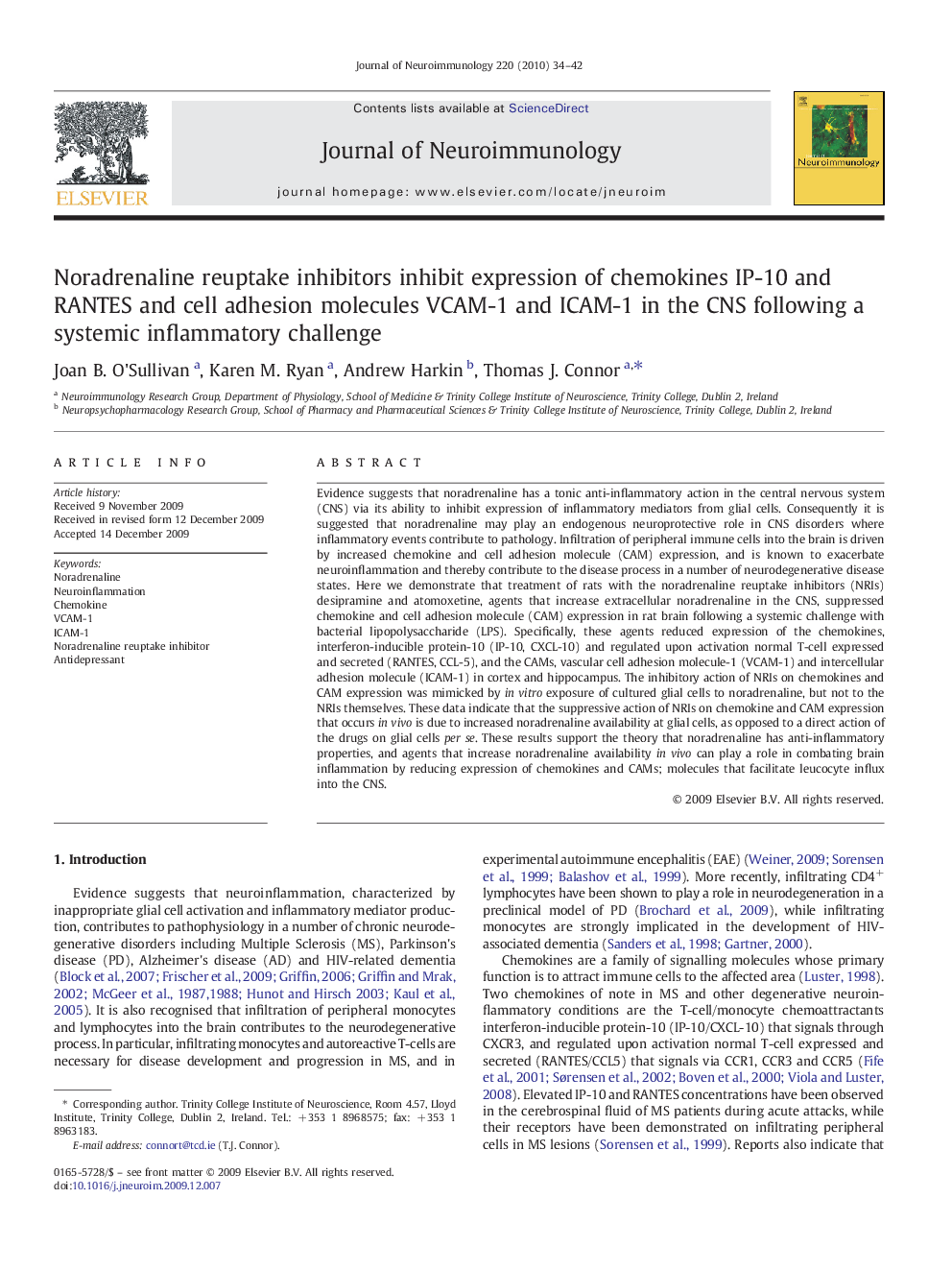| کد مقاله | کد نشریه | سال انتشار | مقاله انگلیسی | نسخه تمام متن |
|---|---|---|---|---|
| 3064684 | 1580453 | 2010 | 9 صفحه PDF | دانلود رایگان |

Evidence suggests that noradrenaline has a tonic anti-inflammatory action in the central nervous system (CNS) via its ability to inhibit expression of inflammatory mediators from glial cells. Consequently it is suggested that noradrenaline may play an endogenous neuroprotective role in CNS disorders where inflammatory events contribute to pathology. Infiltration of peripheral immune cells into the brain is driven by increased chemokine and cell adhesion molecule (CAM) expression, and is known to exacerbate neuroinflammation and thereby contribute to the disease process in a number of neurodegenerative disease states. Here we demonstrate that treatment of rats with the noradrenaline reuptake inhibitors (NRIs) desipramine and atomoxetine, agents that increase extracellular noradrenaline in the CNS, suppressed chemokine and cell adhesion molecule (CAM) expression in rat brain following a systemic challenge with bacterial lipopolysaccharide (LPS). Specifically, these agents reduced expression of the chemokines, interferon-inducible protein-10 (IP-10, CXCL-10) and regulated upon activation normal T-cell expressed and secreted (RANTES, CCL-5), and the CAMs, vascular cell adhesion molecule-1 (VCAM-1) and intercellular adhesion molecule (ICAM-1) in cortex and hippocampus. The inhibitory action of NRIs on chemokines and CAM expression was mimicked by in vitro exposure of cultured glial cells to noradrenaline, but not to the NRIs themselves. These data indicate that the suppressive action of NRIs on chemokine and CAM expression that occurs in vivo is due to increased noradrenaline availability at glial cells, as opposed to a direct action of the drugs on glial cells per se. These results support the theory that noradrenaline has anti-inflammatory properties, and agents that increase noradrenaline availability in vivo can play a role in combating brain inflammation by reducing expression of chemokines and CAMs; molecules that facilitate leucocyte influx into the CNS.
Journal: Journal of Neuroimmunology - Volume 220, Issues 1–2, 30 March 2010, Pages 34–42